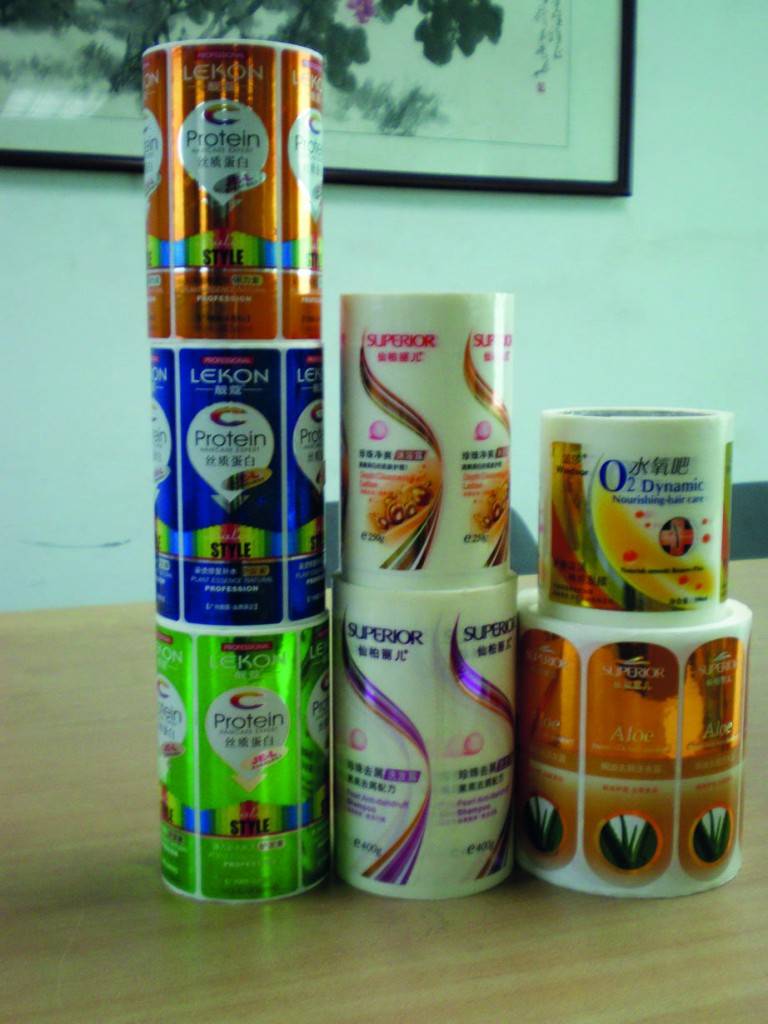The push to downgauge
With its complex make-up, self-adhesive labelstock is particularly susceptible to raw material price hikes, which have hit the market for nearly two years, creating margin pressures at every level of the value chain.
Prices for platinum – the initiator for silicone release coatings – remain extremely high, and crude oil prices continue to raise concern, particularly in relation to plastic films. While paper labels and release liners continue to dominate self-adhesive label use, film facestocks and release liners are gaining market share.
Environmental concerns and the quest for sustainability are encouraging the use of ‘downgauged’ self-adhesive labelstocks to reduce material usage, cut costs, reduce inventory storage space and save on transport costs. Lower-gauge film facestocks and release liners are key players in this arena, with significant reductions in basis weight achieved.
Secondary use of materials
In papers, the manufacturers have fewer opportunities to downgauge, but are concentrating on specialties, like wash-off labelstocks for bottles, security papers embedded with forensic and other taggants, and wine label laminates offering ‘ice bucket’ performance. The proven recyclability of glassine release liner is now beginning to encourage the continuing use of
paper labelstocks.
At the same time, papermaker skills are increasingly employed in the ‘cradle to cradle’ repulping of glassine release liner, although the label industry and its customers have yet to fully take advantage of such schemes.
The remainder of the waste stream created by converting self-adhesive labels – namely the matrix waste – has yet to find a ‘cradle to cradle’ solution – although it can be used in industrial incinerators for waste-to-energy recycling.
The continuing popularity of the ‘no label look’, created using clear film label facestocks, is not the only driver for film usage in self-adhesive labels today. Film release liner, PET or PP, is increasingly a choice today. The combination of film facestock and film liner enables serious downgauging of label laminate, to deliver more labels per reel, fewer roll changes on press and on the labelling line, and therefore significant time and cost savings. Cost savings are additionally enhanced by recycling the film release liner: world shortages of PE granulate and high demand have made recycled liner a financially viable commodity.
Film-based labels
However, it is in the realms of film that self-adhesive labels today see their greatest competition. Film-based shrink sleeve labels, stretch and wrap-around sleeves, and in-mould labels are today enjoying faster growth rates.
Yet these technologies are opportunities as well as threats, and self-adhesive label converters today are embracing the concept of ‘one-stop shopping’ – offering their customers not only the self-adhesive path, but also the non-adhesive technologies which can be profitably and ably printed on their narrow-web presses.
Broadening the agenda
Label converters today are, indeed, at the centre of an intermingling of technologies in the packaging chain, offering both webfed self-adhesive labels and sheetfed wet glue labels, as well as flexible packaging and tube laminate.
They are also experiencing, in the M&A arena, buyouts by flexible packaging firms wishing to expand their offering, and also mainstream packaging companies purchasing self-adhesive label converters to develop their capability to provide personalised packaging.




